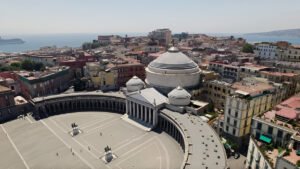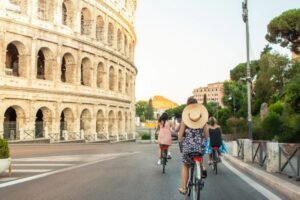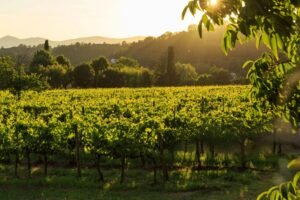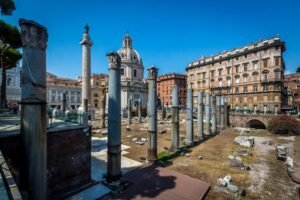Best places to visit in Rome | Discover the top picks
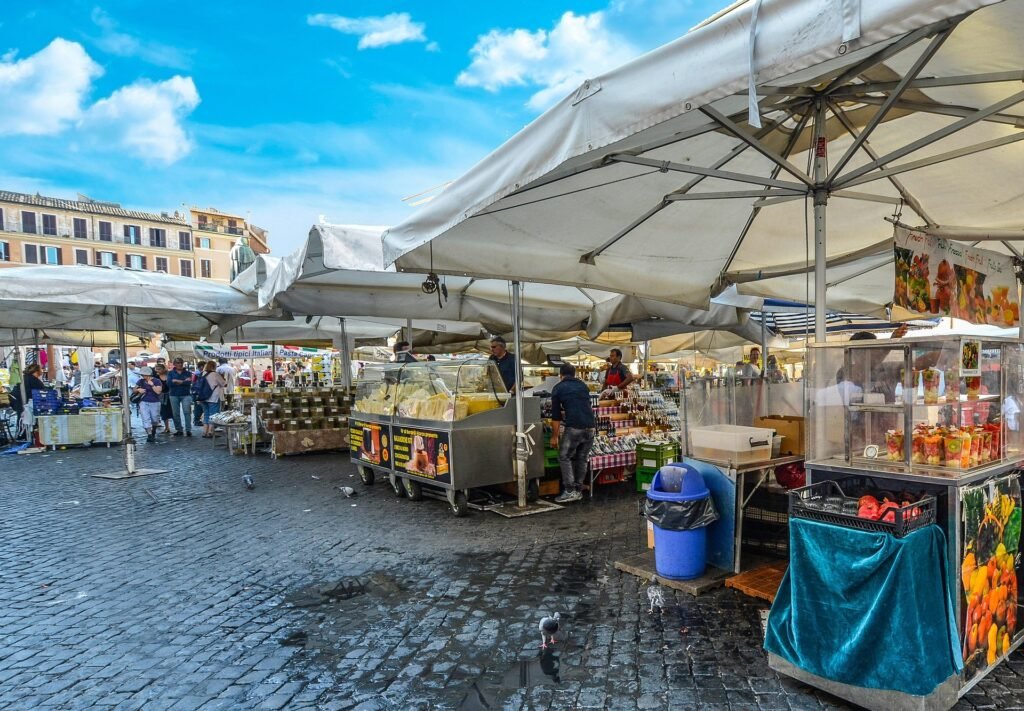
Welcome to our new blog. Today I will discuss Best places to visit in Rome. Italy is the most beautiful country in the world. And Italy’s best city is rome. I hope today’s blog helps you but this blog is very long because this blog is in detailed discussion.
So let’s start Best places to visit in Rome and enjoy.
Colosseum, Piazza del Colosseo, 1, 00184 Roma RM, Italy
The Colosseum is another of Rome’s major tourist attractions. Its construction was started by Emperor Vespasian of the Flavian dynasty in 72 AD and was finished by his son Titus in 80 AD. The elliptical amphitheater could hold up to 50,000 people who turned out to watch gladiators battle, people being publicly executed, and enjoy other forms of entertainment.
This stone and concrete structure, built in the first century, was the largest amphitheater in the Roman Empire. It is considered one of the Romans’ greatest architectural and engineering feats.
The Colosseum stands as one of the greatest examples of ancient Roman engineering, and its size alone is awe-inspiring. Construction began in 72 AD under Emperor Vespasian, at a time when the Roman Empire was nearing its peak. The Romans, known for their innovations in concrete, brickwork, and round arches, were able to construct buildings much larger than those of the Greeks.
Despite the grandeur of its design, the Romans still paid homage to Greek architectural style by decorating the Colosseum with all three of the classic Greek orders of columns: Doric, Ionic, and Corinthian. Stepping inside, one can almost imagine the sounds of the ancient crowds. The Colosseum’s 50,000 seats were filled and emptied with efficiency, much like modern-day sports stadiums.
The Colosseum was designed as an amphitheater, which means “theater with two sides,” allowing twice the audience capacity of a typical theater. Canvas awnings were used to shield spectators from the sun, and underneath the arena was a network of passageways covered by wooden floors. These hidden paths allowed gladiators and animals to be shuffled around unseen during the performances.
The Colosseum was the go-to venue for the bloodthirsty public of ancient Rome. Gladiators, criminals, and wild animals fought to the death in brutal spectacles. To mark the Colosseum’s grand opening, the Roman people were treated to a slaughter of 5,000 animals, setting the tone for the years of brutal entertainment that would follow.
Vatican Museums & Sistine Chapel, 00120 Vatican City
The Vatican Museums began in the 16th century with a collection of sculptures by Pope Julius II. Today, they encompass several museums inside Vatican City and include some of the world’s most important relics.
Attractions of the museums include the spiral staircase, the Raphael Rooms, and the exquisitely decorated Sistine Chapel. Michelangelo painted the chapel ceiling between 1508 and 1512. Today, the ceiling, and especially The Last Judgment, are widely believed to be Michelangelo’s crowning achievements in painting.
To keep the massive crowds under control, the museums have four itineraries that range from one and a half hours to more than five hours. All itineraries end in the Sistine Chapel.
The Vatican Museums are the museums of Vatican City and are located within the city’s boundaries. They display works from the immense collection built up by the popes throughout the centuries, including some of the most renowned classical sculptures and the most important masterpieces of Renaissance art in the world.
Pope Julius II founded the museums in the early 16th century. The Sistine Chapel, with its ceiling decorated by Michelangelo, and the Stanze di Raffaello, decorated by Raphael, are part of the visitor route through the Vatican Museums.
There are 54 galleries (or sale) in total, with the Sistine Chapel notably being the very last sala within the museum. It is one of the largest museums in the world.
The Vatican Museums trace their origin to one marble sculpture purchased 500 years ago. The sculpture of Laocoön and His Sons was discovered on January 14, 1506, in a vineyard near the Basilica of Santa Maria Maggiore in Rome. Pope Julius II sent Giuliano da Sangallo and Michelangelo Buonarroti, who were working at the Vatican, to examine the discovery.
On their recommendation, the pope immediately purchased the sculpture from the vineyard’s owner. The pope put the sculpture of Laocoön and His Sons on public display at the Vatican exactly one month after its discovery.
The Sistine Chapel is truly one of Italy’s best-known sites and holds great religious, artistic, cultural, and tourist significance. Located in the Vatican in the Apostolic Palace, it also serves as the Pope’s official residence. We can trace its origins back to 1471 when Francesco della Rovere of Alèura became Pope Sixtus IV. He was a well-educated person and a keen art lover. Pope Sixtus IV oversaw the restoration of the Cappella Magna between 1477 and 1480, which had been destroyed, and its foundations were used to build the forthcoming Sistine Chapel, which started to be laid in 1473.
The works lasted until 1481, and the chapel was consecrated on August 15th, 1483. Sixtus IV died the following year, and his nephew, Julius II, became the new pope. He continued the chapel’s operations and contributed with some changes and decorations.
The Sistine Chapel’s first architectural project was designed by Baccio Pontelli and supervised by Giovanni de’ Dolci. Pontelli was inspired by Solomon’s Temple, mentioned in the Old Testament, having identical measurements: 40.93 meters long, 13.41 meters wide, and 20.7 meters high.
Its external architecture is breathtakingly elegant, but its interior, with its exquisite ornamentation, is a genuine work of art. Pontelli and another group of great names took part in the chapel’s construction project. These included some of the greatest geniuses in art history, such as Cosimo Rosselli, Piero di Cosimo, Sandro Botticelli, Raphael, and Michelangelo, who painted frescoes portraying religious themes.
St. Peter’s Basilica, Piazza San Pietro, 00120 Città del Vaticano, Vatican City
The center of the Catholic world, St. Peter’s Basilica is a huge church. With an interior height of 400 feet, the space shuttle, together with its booster rockets, could fit inside, as could the Statue of Liberty.
The basilica stands on the traditional site where Peter the apostle was crucified and buried. Construction on the current building began in 1506 and was completed in 1615. Many famous artists worked on the complex and its surroundings: Michelangelo designed the dome, while Bernini designed the great St. Peter’s Square.
Millions of people travel here to the Vatican to visit St. Peter’s Basilica, yet we are here virtually alone, exploring some of the private areas of this sacred place.
Why is St. Peter’s Basilica so special? Because it’s the house of the Pope, but above all, it houses the tomb of St. Peter. Generally, one would head towards the famous Pietà by Michelangelo — the only statue Michelangelo ever signed.
This is incredibly famous. It’s amazing to think of how many hands have touched this statue over the centuries, wearing down the surface. Millions.
I just got chills. He’s indicating the path forward, and also holding the keys — a symbol of finding the way forward. This is so beautiful. The public is not allowed down here, right? No, not at all. Wow, this is the holiest place in St. Peter’s Basilica — the tomb of St. Peter. It’s beyond beautiful.
I am so overwhelmed. It wasn’t a typical ceremony inside St. Peter’s Basilica. Workers carefully chipped away the concrete that had covered the Holy Door since the Holy Year of 2000. After a brief prayer service, the workers began dismantling the wall, removing bricks one by one until they uncovered a box containing mementos from the last Jubilee Year.
The box was transported away and opened later. Inside the zinc container were documents certifying the closure of the Holy Door, a parchment deed, several bricks, and a few commemorative medals from the year 2000. However, perhaps the most significant items were the keys to open the Holy Door, which Pope Francis will use during a ceremony on December 8th to officially start the Jubilee of Mercy.
Pantheon, Piazza della Rotonda, 00186 Roma RM, Italy
One of the best-preserved Roman buildings, the Pantheon was built in 126 AD as a temple for all the Roman gods. The temple has served as a Roman Catholic church since the 7th century.
Eight graceful granite Corinthian columns extend across the front of this circular building, with lesser columns in back. Though it is 2,000 years old, the Pantheon’s famous dome remains the world’s largest unreinforced concrete dome. It is believed that Marcus Agrippa built the Pantheon to be his private temple. The current building was reconstructed by Emperor Hadrian in the second century.
Some experts believe that this is one of the most important buildings the world has ever seen. Roman technology transformed lime mortar into strong, durable concrete. This revolutionized architecture, but after creating this new concrete, the Romans then took it to new levels of ingenuity, unsurpassed even to this day.
One example of such ahead-of-their-time skills can be found in the back streets of Rome. Architect Mark Wilson Jones believes it to be one of the most important buildings ever built. This is the Pantheon, one of the world’s most amazing monuments.
Built in 118 AD, this is a temple to gods no one now worships, but it still inspires awe and wonder. The first time I saw it, it was just as it is now — you’re uplifted, you feel a kind of joy at being in the presence of such an extraordinary thing.
When Emperor Hadrian’s architects began designing a new temple to the 12 main gods of Roman religion, they had to come up with an impressive building. They decided on a vast dome, 142 feet in diameter. By modern standards, that might not sound big, but in the 2nd century, it’s a massive undertaking.
A solid dome made from uniform Roman concrete would be too heavy to be self-supporting. They needed a material light enough and strong enough to span a huge gap. A large dome constantly pushes outward toward its base, so the engineers built 20-foot-thick base walls to support and buttress the dome and stabilize the structure.
Next is the dome itself. A team of carpenters constructed a wooden framework, and masons then covered this with concrete, which they built up in rings.
From the base, but they risk the structure collapsing once the wooden scaffolding is removed if they use normal concrete. Well, the important thing for a dome is that it’s relatively weak at the top, and you want to lighten it.
Their technological skills gave the Roman masons an ingenious solution: they used lighter and lighter stones within the concrete to reduce the load as the layers got higher. You want to go for the lightest possible material at the top and the strongest and heaviest at the bottom. So, they were carefully graded in sections — light at the top, heavy at the bottom.
For strength at the base, they mixed in large lumps of heavy basalt rock. In the middle, knuckle-sized pieces of stone were used, and at the top, they used pumice, a volcanic stone that floats in water.
Finally, at the apex, they left a 30-foot hole called the Oculus. This avoids a heavy load at the dome’s weakest point and also allows light into the Pantheon’s interior.
The engineering of the building is incredibly precise. In fact, a sphere based on the curve of the dome would fit almost exactly inside the square building. The Pantheon remains one of the greatest buildings ever constructed. It’s not until 1300 years later that anyone builds a dome as big as this, with the construction of the Duomo in Florence in 1420.
Even nearly 2,000 years later, the Pantheon is still the largest unreinforced spherical concrete dome ever built, and its design still influences architecture across the world.
Spot the difference: One of these buildings is 2,000 years old, and the other is the New York State Supreme Court. Rome’s Pantheon is the one on the left.
Roman Forum & Palatine Hill, Rome Italy
Located in the small valley between the Palatine and Capitoline Hills, the Forum Romanum was, for centuries, the teeming heart of ancient Rome: the site of triumphal processions and elections, a venue for public speeches, and commercial affairs.
The Forum today is a sprawling ruin of architectural fragments and includes the Arch of Titus and the Temple of Saturn.
In a nutshell, classical Rome lasted about a thousand years—roughly from 500 BC to 500 AD. Rome grew for 500 years, peaked for 200 years, and fell for 300 years. The first half was the Republic, ruled by elected Senators; the last half was the Empire, ruled by unelected Emperors.
In its glory days, the word “Rome” meant not just the city, but what Romans considered the entire civilized world. Everyone was either Roman or barbarian. People spoke Latin or Greek and were considered civilized, part of the Empire. Everyone else was barbarian.
According to legend, Rome was founded by two brothers, Romulus and Remus, abandoned in the wild and suckled by a she-wolf. They grew up to establish the city. In actuality, the first Romans mixed and mingled here in the valley between the famous Seven Hills of Rome. This became the Roman Forum.
In 509 BC, they tossed out their king and established the relatively democratic Roman Republic, which began perhaps history’s greatest success story: the rise of Rome. From the start, Romans were expert builders, and they had a knack for effective government.
The building was once richly veneered with marble and fronted by a grand portico. It’s the Curia, where the Senate met and set the legal standards that still guide Western civilization. The reign of Julius Caesar, who ruled around the time of Christ, marked the turning point between the Republic and the Empire. The Republic, designed to rule a small city-state, found itself trying to rule most of Europe.
Something new and stronger was needed. Caesar established a no-nonsense, more disciplined government, became dictator for life, and for good measure, had a month named in his honor—July.
The powerful elites of the Republic found all this change just too radical. In an attempt to save the Republic and their political power, a faction of Roman Senators assassinated Caesar. His body was burned on this spot in 44 BC.
The citizens of Rome gathered here, in the heart of the Forum, to hear Mark Antony say, in Shakespeare’s words, “Friends, Romans, countrymen, lend me your ears. I’ve come to bury Caesar, not to praise him.” But the Republic was finished, and Rome became the grand capital of a grand Empire.
The Via Sacra (or Sacred Way) was the main street of ancient Rome. It stretched from the Arch of Septimius Severus to the Arch of Titus. Rome’s various triumphal arches, named after the emperors who built them, functioned as public relations tools. Reliefs decorating the various arches show how war and expansion were the business of the state. Rome’s thriving economy was fueled by plunder and slaves, won in distant wars.
Trevi Fountain, Piazza di Trevi, 00187 Roma RM, Italy
Completed in 1762, this world-famous Baroque fountain features a mythological sculptural composition of Neptune, the god of the sea, flanked by two Tritons. It is so named because of its position at the junction of three roads; tre vie in Latin. The fountain was the setting for an iconic scene in Fellini’s film La Dolce Vita, starring Anita Ekberg and Marcello Mastroianni.
A legend says that anyone who throws a coin into the fountain shall one day return to Rome.
The work started on September 30th of this year and lasted less than three months. In those three months, we achieved our objective, which was what we had set out to do: to preserve, especially the part of the area with the steps. We have redone the new waterproofing, as you can see, which has a different color than before the work.
We have fixed and cleaned the entire edge of the pool, which now, as you can see, has returned to its original state after restoration. We have fixed the entire area of the steps, all the curtain brickwork, and all the elevated parts around the fountain. We also removed the biological patinas, meaning all the green growth that was there, as well as the black edges of dirt from all parts of the fountain.
Piazza Navona, 00186 Roma RM, Italy
One of the most famous of Rome’s many squares, Piazza Navona was established towards the end of the 15th century and preserves the shape of a Roman stadium that once stood here. The buildings surrounding the square stand where the spectators once sat. Today, the square features no less than three magnificent fountains and is an immensely popular place to sip a cappuccino, shop, and watch street performers.
Piazza Navona in the Campo Marzio. What we have here in the floodplain of Rome is this incredibly well-preserved shape from Rome’s ancient Greek stadium. It was originally built, as we understand from the ancient sources, in wood by Augustus and then rebuilt at the end of the first century AD in stone by Emperor Domitian.
Now, all those buildings around the edges are sitting on top of the remains of the seating—seating for 30,000 spectators. So, what you’re seeing today is nothing compared to the roar of the crowd watching foot races, wrestling, and so forth. This was not Rome’s number one venue, of course; we have the Circus Maximus and the Colosseum, but it was up there. It still remains today one of the most famous piazzas in the world. Why? Because of its unique shape, based on its ancient remains.
Castel Sant’Angelo, Lungotevere Castello, 50, 00193 Roma RM, Italy
Castel Sant’Angelo was built to be a mausoleum for Emperor Hadrian and his family. Built in 123 AD, it was later turned into a fortress and castle by the popes. It was once Rome’s tallest building. The ashes of other emperors were buried there but were scattered when the Visigoths invaded in 410.
It also served as a prison, but today the castle is a museum. Among the most well-known sights in Rome, film buffs will recognize it as a setting from Angels and Demons.
Originally built in the second century AD as the mausoleum of Emperor Hadrian, the Castel Sant’Angelo was transformed into a Papal fortress at the beginning of the 14th century by Pope Nicholas III.
The name of the castle comes from the angel that you see perched on top, which celebrates a miracle that allegedly occurred in the 6th century when the Archangel Michael appeared over the castle, sheathing a sword and marking the end of a plague.
And for you opera buffs, you may also know the Castel Sant’Angelo because this is where the third act of Giacomo Puccini’s celebrated Tosca takes place, and where she leaps to her dramatic death.
Spanish Steps, Piazza di Spagna, 00187 Roma RM, Italy
I’m walking down one of the most celebrated staircases in the world, and of course, I’m hoping I don’t trip. I’m on the Spanish Steps, which, ironically, were actually built by a Frenchman in the early 18th century to connect the church you see at the top of the hill, Trinità dei Monti, with the nearby Spanish Embassy down at the bottom of the hill.
So, 135 steps connect the two monuments, which have become one of the most celebrated places in the entire city of Rome. Not only due to their beauty but also because they were showcased in a celebrated film called Roman Holiday.
You may remember Gregory Peck and Audrey Hepburn riding their Vespa up to the bottom of the stairs and seeing this great flurry of people. Well, that tradition has carried on for more than half a century now, and in fact, today the stairs are always packed with people looking to get a bit of that Roman magic by walking up or walking down.
At the bottom of the Spanish Steps is a celebrated fountain carved by the lesser-known Bernini, Pietro Bernini, father of the more famous Gian Lorenzo Bernini. They call it the Barcaccia or the “ugly boat,” even though the sculpture is by no means ugly. But it commemorates an important event that took place at the end of the 16th century when the Tiber River flooded and actually brought a small boat all the way down into the center of the city, far away from the river itself, and left it stranded here.
So, to commemorate that particular event, Pope Urban VIII decided to have a fountain erected in the piazza in the shape of a boat to remember that strange occurrence here in the city of Rome.
Galleria Borghese, Piazzale Scipione Borghese, 5, 00197 Roma RM, Italy
The Galleria Borghese is an art gallery that was built as a party house by Cardinal Borghese in the 17th century. A nephew of Pope Paul V, the cardinal was also a patron of the arts. The galleria today houses many paintings, sculptures, and other antiquities from his collection. Paintings by Titian, sculptures by Bernini, and the National Museum of Musical Instruments can be seen here.
When he was elected Pope in 1605, Paul V decided to transform some land that he owned just outside the city of Rome into a villa, a suburban villa located outside the city proper, and to use that structure for relaxation, a place to get away from the stresses of urban living. He asked his nephew, Cardinal Scipione Borghese, to assemble the world’s greatest art collection, and Scipione did not disappoint.
In fact, the collection of the Borghese is still housed today in that building that you see behind me, the Borghese Gallery, which is my absolute favorite museum in the entire city of Rome.
This building holds more than just art. There are the secret gardens to the left and right, the aviaries that you see as well, where they had a collection of rare birds, silkworm farms, and dovecotes. This place was what the Borghese liked to call the “theater of the universe,” where they could come to enjoy this great collection of esoteric and beautiful things and show off to the world what a great family they were.
But the term “villa” does not refer only to the building, but to the entire park that surrounds it, where today, Romans come to jog, walk their dogs, and simply enjoy a bit of greenery in the very heart of their city—the Villa Borghese, the great lung of the city of Rome.
Piazza del Popolo, 00187 Roma RM, Italy
Welcome to Rome, Italy! Welcome to the Piazza del Popolo, or People’s Square, which was our final stop in Rome before heading to Florence. The main reason I came here was to see the Chigi Chapel, which was the first altar of science in the Tom Hanks movie Angels and Demons.
Unfortunately, the chapel, located in Santa Maria del Popolo and created by Raphael, wasn’t open until later in the day, so we had to skip it. I’m glad we came here, though, because the square features some beautiful architecture and, historically, was the main entrance to the Roman Empire.
Interestingly, across the centuries, the Piazza del Popolo became the main stage for public executions, the last of which occurred in 1826. Santa Maria del Popolo was built over the tomb of Emperor Nero in 1477 at the site of an 11th-century chapel. Rumor has it that the church is haunted by the ghost of the emperor and evil spirits disturb the residents living close to it. The church contains many impressive works of art, including Rome’s oldest stained glass windows.
In 1562, Pope Pius IV commissioned architect Nanni di Baccio Bigio to construct a large gate, the Porta Flaminia, to impress the pilgrims who entered the city through the Via Flaminia.
In 1655, on the occasion of Queen Christina of Sweden’s arrival in Rome, the inside of the gate was decorated by Bernini at Pope Alexander VII’s request. The gate was later renamed Porta del Popolo. In 1589, Pope Sixtus V had the Egyptian obelisk of Seti I and his son Ramses II moved from the Circus Maximus.
At the center of the square, the 73-foot tall obelisk was originally built around 1300 BC and stood at the Sun Temple in Heliopolis. In 10 BC, the Roman Emperor Augustus had the obelisk transported all the way to Rome.
The obelisk was erected in the Circus Maximus to commemorate the conquest of Egypt, and it’s one of 13 ancient Egyptian obelisks in Rome. From 1815 to 1816, Giuseppe Valadier redesigned the Piazza del Popolo by adding walls around the square, giving the piazza its current oval shape. He also added the central fountain and the four Egyptian lions around the obelisk.
Italian sculptor Giovanni Ceccarini was responsible for the creation of the two marble fountains, and he worked on the statues from 1818 to 1824. The fountain on the western end of the square is the Fontana del Nettuno (Neptune Fountain), which shows Neptune accompanied by Tritons.
The fountain opposite the Neptune fountain, at the foot of the Pincio Gardens, is known as the Fontana della Dea di Roma (Fountain of the Goddess of Rome). The central figure is the goddess Roma, flanked by allegorical figures representing the rivers Tiber and Aniene. Below the goddess is a statue of a she-wolf suckling Remus and Romulus, the founders of Rome.
At the southern end of the square, two symmetrical churches align with Via del Corso: Santa Maria dei Miracoli and Santa Maria in Montesanto. They were commissioned by Pope Alexander VII in 1658. Both were designed by Carlo Rainaldi, but Santa Maria dei Miracoli was completed by Bernini. Some call them twin churches, but the churches are not identical.
Since the land provided for Santa Maria in Montesanto on the left was smaller, in order to give the impression of symmetry, Rainaldi created an oval dome for this church and a circular dome for Santa Maria dei Miracoli.
Testaccio, rome, Italy
Buon giorno, everyone! Hi, I’m Matt PI, and I’m here to introduce you to artists such as Market Walking Food Tours. Come and taste your way through the markets with us! This tour is for anyone who likes to eat—people from all walks of life and all ages. You just need to be interested in food, curious, and willing to try everything that I give you on this tour.
One of the things that we do is stop here at In Salina. They have a prosciuttoria, which is literally a place where we come for cured meats. They also have cheeses and olives, so we pick up a little bit of everything and taste our way through it. This is one of the staple stands that one might stop at when shopping at the market. This is where you get all your basics from, and from here, you can start cooking.
Besides the regular fresh pastas that are made on a daily basis, we’re also looking at more particular grains that have been brought back into production over the past five or six years. These are grains that maybe our grandparents used to see but were phased out due to low productivity or a number of other reasons.
But now they’re back, and they’re back because of taste! For example, this one down there, which is Senator Rockefeller, is an excellent, excellent grain—very sustainable, and its flavor is incredible. It’s something that you tend not to find everywhere, which is why this place is so great for these types of things.
Pizzas with slightly more unusual toppings but all the more delicious, and there has been real research when it comes to the dough and the leavening process. So, if you come on our market tour, this is one of the things that you’d be trying. But we are here at Manny and Pasta, which literally means ‘hands in the dough,’ and one of the questions that we always get is, ‘Do Italians eat pasta every day?’ Yes, we do, and we love it.
One of the great things about this walking food tour is that we’ll also be able to explore the neighborhood of this structure, and the fact that there are still plenty of Romans living here means it’s still an authentic neighborhood where you can get some real, authentic food.
Villa d’Este, Via Regina, 40, 22012 Cernobbio CO, Italy
A fountain masterpiece, Villa d’Este. Its creator, Hippolyto d’Este, was an Italian clergyman who became a cardinal, the second highest rank in the Roman Catholic Church after the Pope. This is his holiday villa in Tivoli, on the outskirts of Rome. Tivoli, with its green hills, was a major resort area for Romans and aristocrats in those days.
Hippolyto d’Este’s villa is reputed to have the most beautiful fountain garden in Italy, exploiting the hilly terrain and water taken from a nearby river. Over five hundred fountains were built in this garden.
In this fountain, water comes out from the rich bosom of the goddess Artemis, a symbol of fertility and childbirth. It was at the peak of the Renaissance movement when fountain designs were inspired by Greek and Roman myths. Hippolyto d’Este, who failed in his ambition to become pope, turned his attention to the arts, and creating an outstanding Renaissance garden was a way to show his power to all.
This fountain has a water-operated organ behind the door. The secret can be found in the movement of water: a powerful stream falls behind the fountain, and the pressure of the water pumps air into the organ and drives the cylinder.
It was a complete innovation for the times, as there was no electricity in those days. The cylinder has many bumps on its surface, just like a wind-up music box. The air is pumped according to the music score to make a tune.
These fountains also became a source of inspiration for various artists in later years. A renowned piano piece, ‘The Fountain of Villa d’Este,’ was created by Franz Liszt after he visited this garden in the 19th century. Hippolyto may not have become Pope, as he had wanted, but thanks to his splendid garden, he certainly left a great legacy for future generations.
Campo de’ Fiori, 00186 Roma RM, Italy
It has a much more tranquil feel, which is strange since it is just a few steps away from Campo. Here, you can relax and have a coffee or a plate of pasta at one of the restaurants. The focal point of the square is Palazzo Farnese. It was once the home of the Farnese dynasty, but today it serves as the French Embassy.
Like many Roman palazzi, this is a functioning museum. Instructions on how to book are provided in our blog link below in the description. The piazza is also home to two large fountains that were once bathtubs in the Ancient Roman Baths of Caracalla. Nearby, on Via di Monserrato, is Caffe Peru’. This quaint cafe is frequented by locals and visitors alike.
It has a bar where you can get coffee, sandwiches, and drinks on the side. You can also order sit-down food and relax in their artistic seating area, which opens up to the street. They change their menu daily and offer dishes with seasonal ingredients—perfect for a casual lunch. Most Romans would agree that Via Giulia is among the most prestigious street addresses in the city.
It’s truly an accomplishment to live on this beautiful road. Via Giulia was created in Rome over 500 years ago by Pope Julius II and is the first example of modern urbanization in the city since antiquity. That’s right—since the time of the ancient Romans. It was a sign that Italy was emerging from the Dark Ages.
Via Giulia is a direct route to the Vatican from the city center. For that reason, it was home to many famous Popes, Cardinals, artists, and esteemed figures like Raphael. The road is framed by a beautiful arch, which is a bridge leading from the former Farnese residence to their patron church. During the Renaissance and related time periods, it was customary to attend church daily.
Death was much more common in those days, and the idea was to be as close to the church as possible in case your time came. My final recommendation is a great place to eat near Campo called Der Pallaro. This spot is like something out of a movie. The restaurant is run by a husband and wife who may each be a hundred years old.
The wife is the chef, and she loves the spotlight. I can almost guarantee she’ll stop by your table to check how you’re doing. Trust the waiters, but don’t over-order. Like many traditional Roman restaurants, they dislike wasted food and will ask you to finish your meal before moving on to the next course or handing over the check. I’m not even kidding.
I hope our video is helpful in planning your next trip to Rome. We have plenty of other neighborhood videos worth watching. If you like this one, please let us know by clicking the thumbs-up button. If you love it, share it with friends. If you want to see more videos, make sure to subscribe to our channel. All these things motivate us to create more helpful content.
Appian Way (Via Appia Antica), Via Appia Antica, 200, 00178 Roma RM, Italy
for a little early christian history, we’re heading outside the city to explore the catacombs. rome’s ancient wall stretches for eleven miles. it protected the city until italy was united in 1870. from gates like this, grand roads fanned out to connect the city with its empire. the appian way, rome’s gateway to the east, is fun to explore on a rented bike.
it was the grandest and fastest road of its time, the wonder of its day. very straight, as roman engineers preferred, it stretched 400 miles to naples and then on to brindisi, from where roman ships sailed to greece and egypt. these are the original stones. tombs of ancient elites lined the appian way like billboards.
while pagans didn’t enjoy the promise of salvation, those who could afford it purchased a kind of immortality by building themselves big and glitzy memorials. these line the main roads out of town. judging by their elegant togas, these brothers were from a prominent family. this is the mausoleum of caecilia metella, whose father-in-law was extremely wealthy.
while it dates from the first century bc, we still remember her to this day, so apparently the investment paid off. but, of course, early christians didn’t have that kind of money, so they buried their dead in mass underground necropoli, or catacombs, dug beneath the property of the few fellow christians who did own land.
These catacombs are scattered all around the city just outside the walls, and several are open to the public. The tomb-lined tunnels of the catacombs stretch for miles and go many layers deep. Many of the first Christians buried here were later recognized as martyrs and saints. Others carved out niches nearby to bury their loved ones close to these early Christian heroes.
By the middle ages, the catacombs were abandoned and forgotten. Centuries later, they were rediscovered. Romantic-era tourists on the grand tour visited them by candlelight, and legends grew Further along the Appian Way is Rome’s Aqueduct Park, offering a chance to see how the ancient city got its water. With its million people, Rome needed lots of water. These ingenious aqueducts carried a steady stream from distant mountains into the city, and they still seem to gallop, as they did 2,000 years ago, into Rome.
These aqueducts were the Achilles’ heel of Rome. If you wanted to bring down the city, all you had to do was take down one of the arches. In fact, in the sixth century, the barbarians did just that. Without water, Rome basically shriveled up. Today, the park is a favorite with locals for walking the dog or burning off some of that pasta.
Thank you, and that wraps up our Best places to visit in Rome | Discover the top picks. Do you agree with the places we chose, or is there somewhere you visited that you feel should be on the list? leave us a comment.
You can find me on Instagram: @dreamytravelersofficial/.


